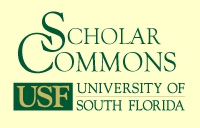Abstract
We contend that individual reactions to universal aesthetics were critical in adapting human brain structure and evolutionary cognition. Emotional responses to aesthetics and reflexive judgments by prehistoric people may have evolved an ecological rationality with intimate pragmatics of survival. In North American Pacific Northwest ecosystems, complex indigenous societies flourished for millennia, developing strategies that allowed them to co-adapt with locally varying, productive landscapes. They evolved ‘societal phenotypes’ based on cultural belief systems fostering ecosystem balance. Their detailed contemplation and experience of natural phenomena, including other organisms’ behaviors, were formalized as traditional ecological knowledge. For example, pre-contact Pacific Northwest societies co-evolved with periodic salmon migrations and blooming gardens of camas lilies, aesthetic events that we suggest inspired awe, captured attention, and motivated memory in individuals. Sharing and collectively storing this ecological information as traditional knowledge enhanced the group’s survival. The natural endowment of judging the sublime and the beautiful through an aesthetic or spiritual connection with the place likely contributed to the success of these indigenous societies, before reservations disrupted their local environmental relationships and cultural transmission of millennial place-based knowledge. Today, the subjective experience of evolutionary universal aesthetics may drive human affinities for natural phenomena and scientists’ preferences in ecological research. We motivate an argument for such unique adaptations by proposing an evolutionary relationship between the biophysical environment, aesthetic responses, and cultural belief systems.
DOI
http://dx.doi.org/10.5038/2162-4593.10.1.6
Recommended Citation
Lam, Mimi E. and Gonzalez-Plaza, Roberto. "Evolutionary Universal Aesthetics in Ecological Rationality." Journal of Ecological Anthropology 10, no. 1 (2006): 66-71.
Available at: https://digitalcommons.usf.edu/jea/vol10/iss1/6
